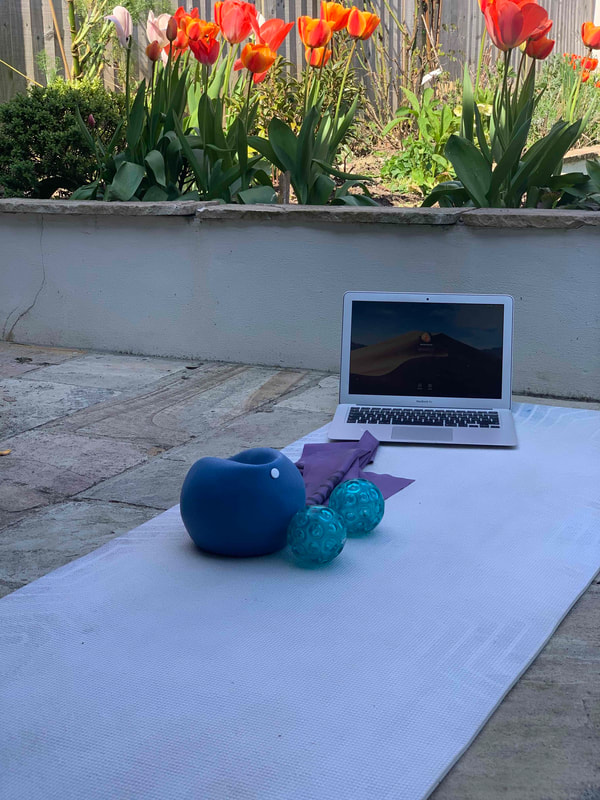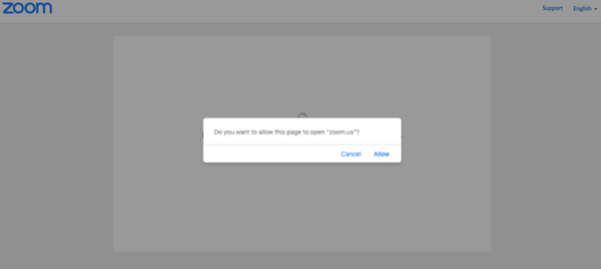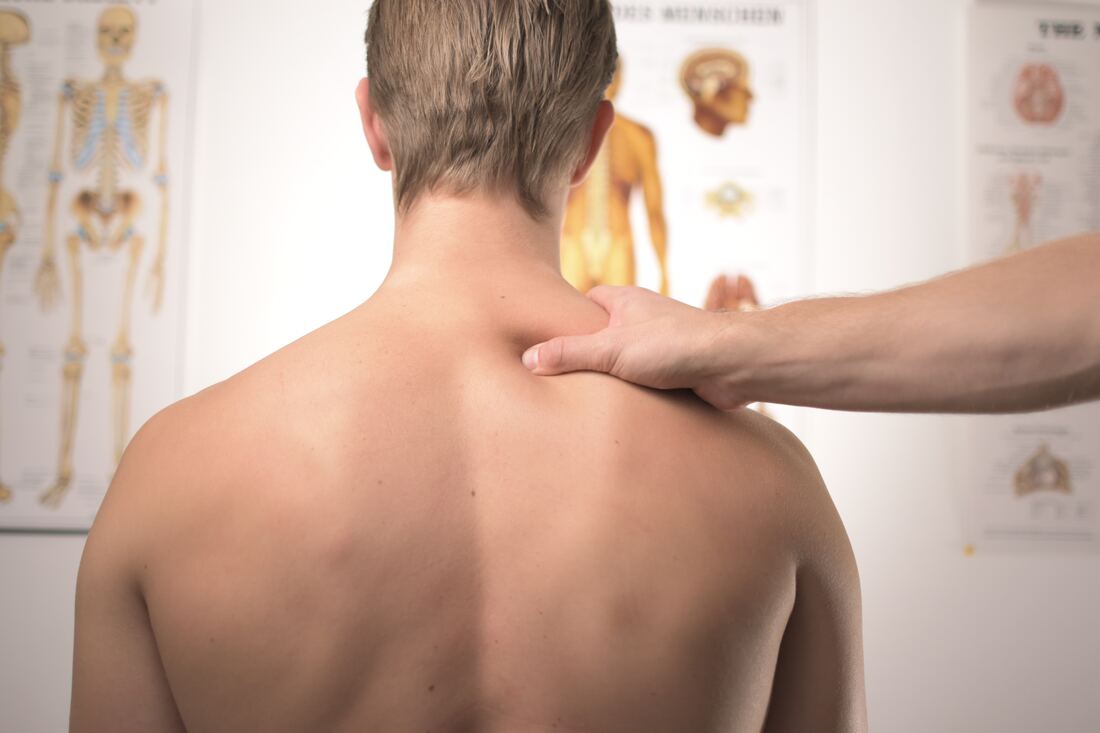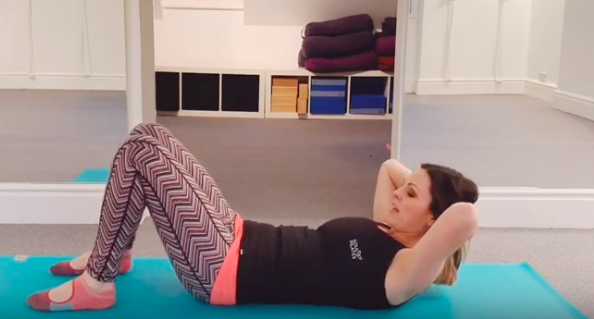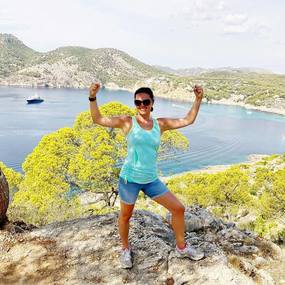|
A dynamic one hour workout which is great for helping you get out of your mind and into your body. This class focuses on pelvic stability and ease, pelvic floor strengthening, functional movement and strength. A great class for all levels but especially good for those with any pelvic floor dysfunction, those working post-natally (like Nic who's baby is 4 months old at the time of filming!), and those who want to improve their posture, release the hips and strengthen the deep core muscles. This is one of those classes which ticks a LOT of boxes! This class was filmed as part of our live virtual classes which you can book via our website. For more classes like this please visit www.mysoul.studio.
1 Comment
Runity (Pain-free Running) coach and Pilates teacher Nic takes you through a dynamic warm up routine which is great to get your body prepared for running and reduce the risk of injury. We've been really missing the reformer and Pilates equipment during lockdown so we've been working really hard to create a new virtual class bringing you all that you love from the reformer into your home. Like many studios we've moved online during lockdown. Find out about our approach to classes and 1:1s and how we can help you keep moving as well as calm and connected in your mind and body. At Soul we want you to experience more than simply exercises so that you feel empowered, connected and at ease in your body. Studio Founder Nic talks about the difference in a Pilates class and a 1:1 to help you understand which might be right for you. Welcome to the world of Virtual classes with Soul! We will be coming to you via the power of Zoom which is a web-based video technology that lets us see each other via our cameras on a computer, tablet or phone. Here are some tips to help you have a really great class experience so that you get the most out of your session. It is really simple to set up so that we can see you (if you’re happy with this, you don’t have to) and you can see and hear us! You Home Studio Set Up Do try to place your device in a way so we can see all of you on your mat. This might not be possible but if it is, it will allow us to teach you in as close to the way as we do in the studio. We may not be physically with you or able to do hands on correction but we will want to ensure you’re moving with precision and we can only do that if we can see you! So side on is best where possible but don’t worry if it isn’t! Arrive Early! Do take the time to get into your class 5 minutes ahead of the start time. This will give you plenty of time to test your set up, and ask the teacher for help if you’re having problems. We will do our best to help you where needed, hopefully this guide will do that for you! And as we do more of this, it will become easier each time. We will be recording the class so if you can’t join or had any issues you can email us to share the link which is valid for 72 hours. Joining your Virtual Class If you book direct with us, you will receive your link as soon as you book your class. It will also appear in the reminder email which is sent out 1 day prior to your class. These emails are automated emails from MindBody and may be something you're used to ignoring so please check these for your class link! If you haven't received the link, please email us well ahead of your class time for us to check your settings on your MindBody profile to check you've opted in to received account and class notifications. You can also do this yourself by checking your details and preferences in your profile. If you plan to view on tablet or mobile please download the Zoom app in advance, you can search in your app store or if you view https://zoom.us/download you will see the links to the android and Apple app store half way down this page. You will need to create an account but this is free and creating an account will give you more features which are super helpful. Make sure your Zoom name is your name so we know who you are! Can I speak? How do I communicate with the teacher? Zoom is a tool primarily for video conferences, so when you speak, the main view changes to be you for everyone who’s in the class. For that reason we have selected that you are muted as standard, with your video on. You can change this but just be aware that if you speak, everyone will see you. So to make it easier can we ask you to “raise a hand” and we will unmute you, or just wave at the screen! Or you can use the chat function to ask a question. You can chat to “everyone” or just select the studio. It's really important to us that we interact with you. know where your body is at and provide you with as close to the physical interactive class experience as is possible. Making sure you can see your teacher and not your fellow class members!
If you are on a desktop, you can click on the three dots and “pin” the the screen of the teacher, or select "speaker view". You will also see everyone in the class as part of your "gallery view" which you can move around on the screen. Do ensure that we are your main view before class starts! On the mobile or tablet app, you can scroll through until you have the teacher in view. As you scroll you will see another option is to see everyone in the gallery. If this is all you can see then just scroll left/right until you see the virtual studio only. If you can’t see us as the main screen do let us know via chat, and try these tips. If you can’t hear the teacher You may need to turn on the audio on your device which is in the bottom left corner and then ensure you’re muted! At the end of your class Do please let us know your thoughts by emailing us a [email protected]. . Check out out virtual class timetable here. Look after yourselves and each other! Nic, Studio Founder xx What is Pilates?
Pilates was created in the early 1900s by Joseph Pilates. He believed that mental and physical health are interrelated and created a method to coordinate the mind, body and spirit. He created a set of principles alongside exercises and specialist equipment to create opportunities for functional movement which he called ‘Contrology’. Over the years his work proved to be a powerful tonic to modern day life, which is becoming increasingly sedentary, and Pilates gained a reputation for physical rehabilitation alongside mental wellbeing. At Soul Pilates, we align with the original ethos that Joseph Pilates created alongside the latest in movement science. If Joe was around today we’re sure he would constantly be striving to learn more so he could teach in greater depth, and we do too! We run 1:1 sessions, which are predominantly used to support clients with on-going pain or health concerns, alongside small group specialist classes. We’ve gained a reputation for our excellent teaching standards which is something we’re really proud of, and as a team we are constantly learning and fascinated by the body and what it is capable of. Our approach at Soul is to provide a mindful movement experience, as this connection of the body with the mind is a powerful medicine for many of our modern day health concerns. The power of movement constantly astounds us and our vision is to help our clients move better so they can feel better. Pilates is endorsed by doctors, physical therapists, professional athletes and dancers around the world. Pilates is excellent for the rehabilitation of injuries and relieving chronic pain. What is the difference between a 1:1 and a class? Ideally we would see everyone for a 1:1 to start with, but we certainly would like to see you for a personal session if you’re currently experiencing physical discomfort, have an on-going condition (such as Parkinsons, MS), have recently had surgery or have on-going rehabilitation needs. It can sometimes be easy to forget why you turned your passion into your career. Pilates was something which I loved so much during my career in marketing. It provided me with ease, strength and tone in my body but also space and calm in my mind. That’s why after many years as a Pilates Class regular, I decided to train with Polestar Pilates, initially just to learn more, and subsequently my love grew and I ultimately turned it into my full time career and my own studio which is soon to have 2 locations and 12 teachers.
But like many passions that you turn into your career it can be all too easy to forget the reasons why you really loved it in the first place. Luckily this never really happened for me. I have kept up my movement practice which I still love and feel inspired by, plus I get to be one of those people who really does love their job and I literally feel like I never work a day in my life. I think I get more out of teaching that my clients get out of being taught! But every now and again I’m reminded of just how amazing the power of Pilates is and this happened just last week in a big way. Now in my 40th week of pregnancy with my second child I’m all too aware of the changes that a woman goes through during pregnancy, which whilst an amazing work of nature, doesn’t mean that your body doesn’t scream at you, sometimes a little and sometimes a LOT during those 40 weeks (or in my case a little longer!). Have you been hearing the word ‘fascia’ bandied about as you try and get your downdog on or swim into your updog and thought ‘wtf is this teacher talking about?’
Well my friends, today is your lucky day, time for an explanation of what fascia is and why we’re all getting excited about it. By Clare Shaw, Soul PHiiT & Soul Yoga Instructor Pilates is an incredibly popular form of exercise that was developed in the early-1900’s, but didn’t make it over to England until the 1970’s. Since then it’s been knocking around on the fitness scene and been a constant presence in people’s workout routines.
Focusing on core strength and stability, it utilises controlled movements and breathing to build strength, coordination, balance and improve alignment. Where did Pilates come from? It was developed by Joseph Pilates, a German bodybuilding enthusiast who focused his life on becoming fit and healthy after a sickly childhood. He began a new approach to fitness which combined body conditioning using body weight and apparatus, such as the Reformer, which is still used in studios today! He extensively researched many different forms of exercise; from Ancient Roman exercise routines to modern day fitness, such as gymnastics, and from tai chi to meditation. In the 1920’s Joseph Pilates opened his first studio in New York and his methods were a hit! Especially with dancers - they found it a perfect way to recover from injuries and strengthen their weak spots. It grew in popularity before being brought over to the UK where the first Pilates studio opened in London in 1970. And, as they say, the rest is history! A beginners guide to Pilates Hundreds of studios and venues across the UK now offer Pilates and they range in a broad spectrum of styles. Have you ever been curious to try it out? We’ve collaborated with Soul Pilates, a quality Pilates studio based in the centre of Bristol, to bring you an in-depth beginners guide to Pilates. See what it’s all about and if it’s something you would want to give a go! Guest Post from MoveGB Osteoarthritis is the most common form of degenerative arthritis; it occurs commonly in the joints which weight bear causing them to become painful resulting in limitations in movement and function.
The joints which can be affected are the knees, hips and feet specifically the big toe along with joints which are used a lot in daily life such as the hands, back and neck. ‘Around a third of people aged 45 years and over in the UK, a total of 8.75 million people, have sought treatment for osteoarthritis’ (Arthritis research, UK). In the synovial joints such as the hip, knee, toes, fingers and wrists the structure of these joints allows movement of two adjoining bones. By Rachel Ross, Soul Pilates Teacher “Pull your shoulders back and down”, “engage your core”, “sit up straight”… we’ve probably all heard these kinds of cues when it comes to finding ways to improve our posture. But let me let you into a little secret: our posture is not something which is consciously controlled - that means you can’t think your way to better posture. By looking to control our body’s position with these thoughts we unknowingly often just create more tension and stiffness in our body which ultimately leads to more postural problems and therefore increased body discomfort.
It might be interesting to know that your pelvis is twisted, or your shoulders are rounded, or you have an increased curve in your lower back BUT the truth is this is not information your brain can actually do anything with. In my experience when people try to correct these issues by dropping one side of their pelvis, standing in a different way or holding their shoulders back, they start to experience more, not less problems. By Nic Lenny, Studio Founder We are perfectly designed to run. The problem is we have modified our lifestyle the point where our physical activity has been reduced to the absolute bare minimum. Basically we live our lives sitting in a chair and that negatively affects our health. We then try to undo this by heading out for a run only to feel sore and often get injured.
We now know that a sedentary lifestyle kills more people than obesity, hypertension and diabetes combined. This is a staggering fact and one which is easily reversible. Many people think running is damaging to their health but the reality is the sofa is far more dangerous to our health and our bodies! By Nic, Studio Founder & Runity Coach Are you foam rolling your IT band? Does it hurt in a satisfying way but not really changing how your IT band actually feels? Here we show you an adapted Pilates exercise using a band which lengthens your IT band, inner thighs, ankles and glutes. You will literally feel the difference instantly! By Nic Lenny, Studio Founder Studio owner Nic takes you through a 20 minute core workout in this video you can follow at home. But first she explains what "the core" is, (and what it isn't), and why strengthening your core is not simply about abdominal work and sits ups! By Nic Lenny, Studio Founder  As we head into a New Year, I've found myself having a few conversations recently with clients who have been asking me about my own health journey, why I become a Pilates Instructor and my personal road to recovery from a car accident and subsequent chronic pain. All these conversations seemed to surround the concept of 'wellness'. So what is 'wellness'? How do you achieve it? And what’s the secret to being well, to being happy and, to coin a slightly overused phase these days, "living your best life"? I think I need to be pretty upfront about this and say that honestly, I don’t have a single answer. But the truth is no-one really does, despite the marketing hype promising you health, wellness and a body like a bikini clad Instagram star. I believe the reason no one has “the answer” is that there simply isn’t a one-size-fits-all approach to being well, to being happy and to living any sort of great life. In my experience, both with myself and from with working with clients with varying complex needs and backgrounds, what I’ve realised that ‘wellness’, or as I like to think of it - "being well", is a bit like baking a cake. First you need a set of ingredients. And as someone who really does like cake, I can tell you, there are many, many options when it comes to cake and this is a very good thing! Some recipes you try and they work really well, some need a bit of you own personal tweaking, and some spectacularly fail to rise, or stick to the tin.
I think wellness is a bit like this. It’s not simply about Pilates, or meditation, or what you’re eating, or how you feel about yourself, or what childhood you had, or what exercise you’re doing, or if you love or hate your job, or the downtime you take, or the people you surround yourself with. To be honest it’s a combination of all these things and a whole heap more. These are all ingredients to the recipe of wellness. And the amount of each ingredient required varies hugely from person to person. We are not all created equal and I think this is what provides the rich tapestry of humanity. By Nic Lenny, Studio Founder We love to see you working on what you've learned in your sessions at home. Here are some handy video tutorials on the key points we're looking for in each of these common Pilates homework exercises. By Nic Lenny, Studio Founder A Video Guide to Dead Bugs / Knee Floats Did you know that up to 80% of your immune system is found in your gut, and that the health of your digestive system affects your mood, motivation, will power, energy and even your intuition? From a movement teaching perspective I find the gut / core absolutely fascinating. I imagine that if you have ever worked out, you would have heard the cue 'tighten your core', 'pull in your belly' 'zip up your pelvic floor' and probably countless more ways to tighten your 'stomach' - unfortunately these really aren't the best cues to truly train your 'core', and in fact can have the unwanted side effects of anxiety, an increase in blood pressure, constipation, a flacid gut, indigestion, increased risk of injury, decrease in flexibility and less ability to absorb force - need I go on? Guest Post by Rachael Hall, Franklin Method Educator 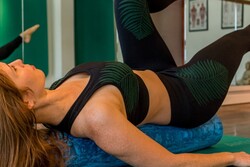 What is the core anyway? Well it is way more that the thin layer of abdominal muscles that surrounds your belly. It is your stomach, your intestines, your colon, your kidneys, your psoas, your ql, your diaphragm, your pelvic floor, your spinal muscles - and these beautiful, clever parts work together as a whole, in symphony, they communicate with each other, they influence each other and they definitely do not want to be held in a vice regularly by 'tightening your core'. What’s brought you here today? Are you looking to be toned, to be thinner, maybe it’s to not be in pain or are you seeking a bigger (or a smaller) bum…? When I was in the planning for the opening of the Soul Pilates studio three years ago, I looked around at the wider industry and these were the kinds of messages I was constantly bombarded with. And, from a marketing point of view this is the kind of message that sells. People mostly want to be a better version of themselves it seems. But this wasn't my vision and it wasn’t my reality. Rewind 8 years and I was living in Leeds as a Digital Director for a prestigious marketing agency. I drove a convertible, ran for my train in sky scraper heels, flew between Leeds and Geneva for meetings, went to the gym almost every day and weighted 2 stone more than I do now.
There are certain parts of the body that always get more attention than others.
The pelvic floor (especially in the female demographic) is definitely a popular area of discussion in pilates, yoga and physical therapy. This is a good thing as so many women and men suffer from pelvic floor issues. There are whole practices dedicated specifically to pelvic floor health. In pre and post natal pilates sessions it’s very common that the pelvic floor is the central focus ensuring the muscles are strong and well co-ordinated. In contrast to this, I have also taught thousands of women that have left the hospital after having had a baby or pelvic surgery, with the instructions to 'do their pelvic floor exercises'- with absolutely no clue what that actually means, other than stopping the flow of water?! In this blog, I aim to give you more support around how to train your pelvic floor to improve continence, pelvic and lower back support, balance, flexibility and even force absorption! Guest Post by Franklin Educator Rachael Hall |
Archives
October 2023
Categories
All
|
|
STAY UP TO DATE WITH THE LATEST NEWS & OFFERS:
about us: |
useful information:special offers & retreats:Welcome Offers
Book Pilates Weekend Retreats Workplace Pilates & Yoga Private Events Pilates Offers Hen Parties follow Soul Pilates: |
DOWNLOAD OUR APP:our classes:Beginner Pilates Classes
Advanced Pilates Classes Pilates Equipment Classes Pilates Reformer Classes Pilates Matwork Classes Pre & Post Natal Classes Class Timetable 1:1 Pilates Sessions Soul Pilates at Home |
© Soul Pilates Ltd 2023
City Centre Studio: 57 Queen Charlotte Street, Bristol BS1 4HQ
Bishopston Studio: Bristol North Baths, Gloucester Road, Bristol BS7 8BN
0117 214 1655 | [email protected]
Soul Pilates Limited is a company registered in England and Wales with company number 10525634
Registered Office: 57 Queen Charlotte Street, Bristol BS1 4HQ
City Centre Studio: 57 Queen Charlotte Street, Bristol BS1 4HQ
Bishopston Studio: Bristol North Baths, Gloucester Road, Bristol BS7 8BN
0117 214 1655 | [email protected]
Soul Pilates Limited is a company registered in England and Wales with company number 10525634
Registered Office: 57 Queen Charlotte Street, Bristol BS1 4HQ




